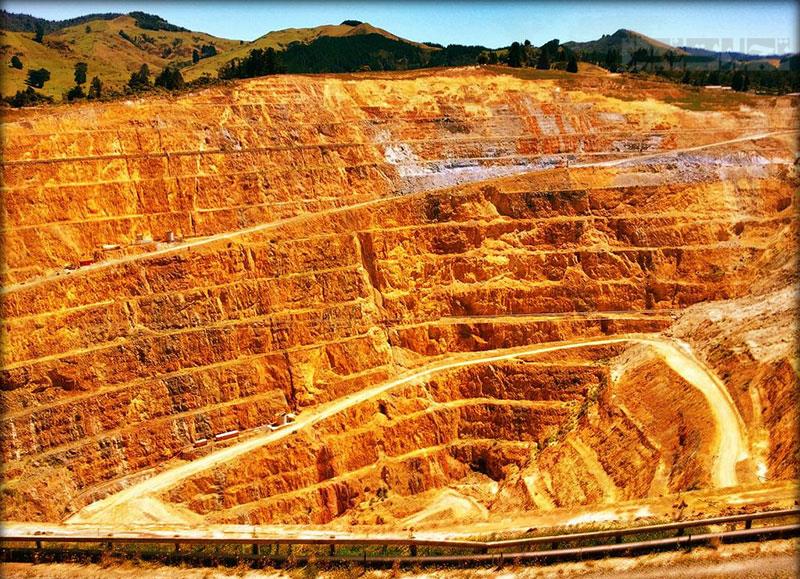
Iran’s Gold Riches

Further explorations in the area are expected to increase the reserve’s capacity to 150 tons.
The mine, for the first time in history, is adopting an indigenous extraction method developed by an Iranian company that employs chemicals instead of physical processes.
Zarshouran, which started production back in late 2014, is estimated to have a lifespan of over 20 years based on its current proven reserves.
So far, more than $44 million have been invested on the development of the mine which, in addition to gold, has the capacity to produce 2.5 tons of silver and 1 ton of mercury per year.
Sari Gunay Gold Mine in the western province of Kurdestan is Iran’s second-largest gold deposit with 63 tons of estimated reserves and an annual output of 2 tons. Sari Gunay was Iran’s only gold mine that attracted foreign direct investments throughout its development.
Back in 2009, the world-renowned Rio Tinto Group took an interest in Sari Gunay and formed the joint company Zar-Kouh with two Iranian mineral firms to conduct exploration operations at the mine. The cooperation, however, did not last long.
By the time the mine’s reserves were determined, the British–Australian company gave up on exploiting Sari Gunay, describing it as “uneconomical” due to the mine’s low gold grade.
Following a shortlived presence of a Chinese company at the mine, the government allowed Kazakhstan-based EMC Company to operate Sari Gunay with a direct investment of nearly $63 million in cooperation with Zar-Kouh Company.
The gold mine, located 90 kilometers east of Sanandaj, was supposed to start operation in September 2013. The deadline was extended until October 2014 but EMC once again missed the deadline.
The mine finally became operational back in late January and is currently operated by Zar-Kouh.
The country’s next gold-rich mines include Aq Darreh and Kharavan in northwestern Iran, each with a capacity of 30 tons. Kouh-Zar in the northeastern Khorasan Razavi Province with 15 tons and Mouteh in the central Isfahan Province with 14 tons of gold reserves are ranked Iran’s fourth and fifth biggest gold mines respectively.
In terms of grade, Kharavan (4 grams per ton), Kouh-Zar (3.3), Aq Darreh (2.7) and Mouteh (2.5) follow Zarshouran respectively.
Furthermore, three gold mines have been recently discovered in Zanjan Province and are awaiting feasibility studies for exploitation.


Trump weighs using $2 billion in CHIPS Act funding for critical minerals

Codelco cuts 2025 copper forecast after El Teniente mine collapse

Electra converts debt, launches $30M raise to jumpstart stalled cobalt refinery

Barrick’s Reko Diq in line for $410M ADB backing

Abcourt readies Sleeping Giant mill to pour first gold since 2014

Nevada army depot to serve as base for first US strategic minerals stockpile

SQM boosts lithium supply plans as prices flick higher

Viridis unveils 200Mt initial reserve for Brazil rare earth project

Tailings could meet much of US critical mineral demand – study

Kyrgyzstan kicks off underground gold mining at Kumtor

Kyrgyzstan kicks off underground gold mining at Kumtor

KoBold Metals granted lithium exploration rights in Congo

Freeport Indonesia to wrap up Gresik plant repairs by early September

Energy Fuels soars on Vulcan Elements partnership

Northern Dynasty sticks to proposal in battle to lift Pebble mine veto

Giustra-backed mining firm teams up with informal miners in Colombia

Critical Metals signs agreement to supply rare earth to US government-funded facility

China extends rare earth controls to imported material

Galan Lithium proceeds with $13M financing for Argentina project

Kyrgyzstan kicks off underground gold mining at Kumtor

Freeport Indonesia to wrap up Gresik plant repairs by early September

Energy Fuels soars on Vulcan Elements partnership

Northern Dynasty sticks to proposal in battle to lift Pebble mine veto

Giustra-backed mining firm teams up with informal miners in Colombia

Critical Metals signs agreement to supply rare earth to US government-funded facility

China extends rare earth controls to imported material

Galan Lithium proceeds with $13M financing for Argentina project

Silver price touches $39 as market weighs rate cut outlook

















